If you are a Winaero reader, you should already know that Windows 10 offers you different options to take a screenshot without using third party tools. In this article, we will see how to take a screenshot of the login screen.
Advertisеment
Previously, we reviewed the ability to take a screenshot of the Lock screen in Windows 10. It was a very easy procedure. However, you cannot take a screenshot of the sign-in screen the same way.
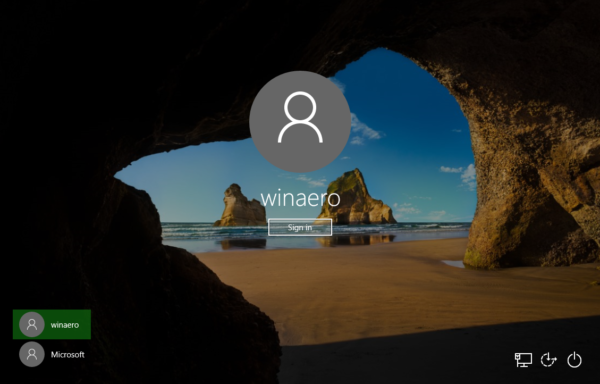
After you dismiss the Lock screen, the next screen you see is the login screen. In Windows 10, it comes with a list of all user accounts available on your PC in the bottom left corner of the logon screen. You can click the user avatar, enter the password if necessary, and login using the provided credentials. The login screen excludes hidden user accounts. Also, it is possible to make Windows 10 ask for the user name and password every time and hide the user list.
You may want to take a screenshot of the Login Screen in Windows 10. Let's see how it can be done.
Before proceeding, you need to replace the Ease of Access button on the login screen with the command prompt. From the command prompt, you can run an app which allows taking screenshots. In this article, I will use XnView.
Tip: write down the full path to the executable file of the app you are going to use. In my case, it is c:\data\apps\XnView\xnview.exe.
Note: Some apps do not work properly when started from the login screen in Windows 10. For example, my favorite Greenshot app doesn't start, and Snipping tool doesn't show the save file dialog.
The way you can run any app using the Easy of Access button on the login screen is described in detail in the following article:
Run any app from Ease of Access button on Windows 10 login screen
We will use the same method to run the cmd.exe app. Here is how.
Run the Snipping Tool from the login screen in Windows 10
- Open the Registry Editor.
- Go to the Registry key
HKEY_LOCAL_MACHINE\SOFTWARE\Microsoft\Windows NT\CurrentVersion\Image File Execution Options
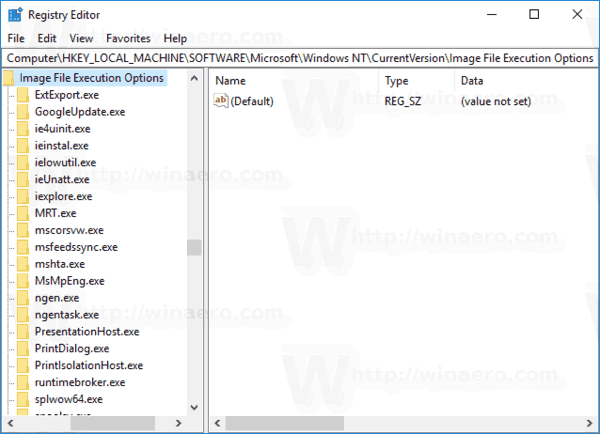
- Here, create a new subkey named utilman.exe.
- Under the key you created, create a new string (REG_SZ) value named Debugger and set its value data to the following line:
C:\Windows\System32\cmd.exe
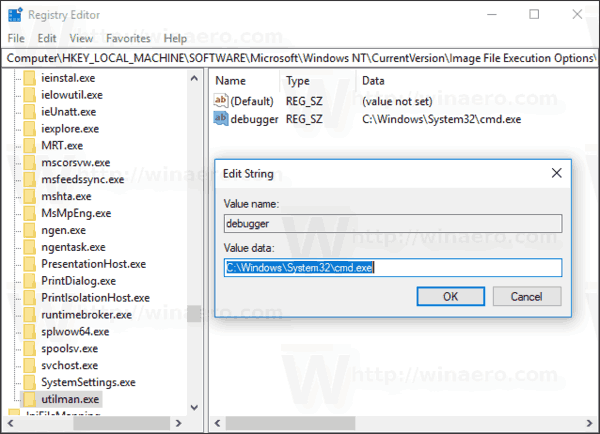
The first part is done. Now, let's see how to capture a screenshot of the login screen.
Capture a screenshot of the login screen in Windows 10
- Lock your computer.
- Dismiss the lock screen (Press any key on the keyboard).
- Click on the Ease of Access button on the login screen to run the command prompt.
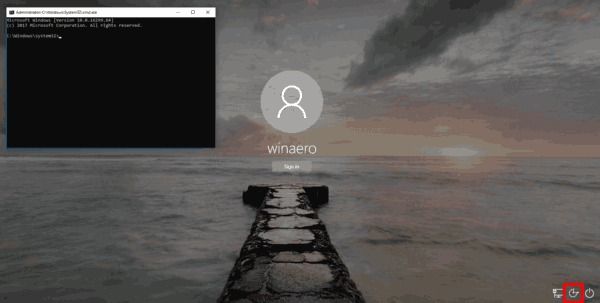
- In this command prompt, type the full app to your app to start it. In case of XnView, type the command as follows:
timeout 5 & c:\data\apps\XnView\xnview.exe -capture=desktop,c:\data\screenshot.jpg
Minimize the command prompt window.

You are done!
Don't forget to correct the file path. Here is my screenshot.jpg file under c:\data:
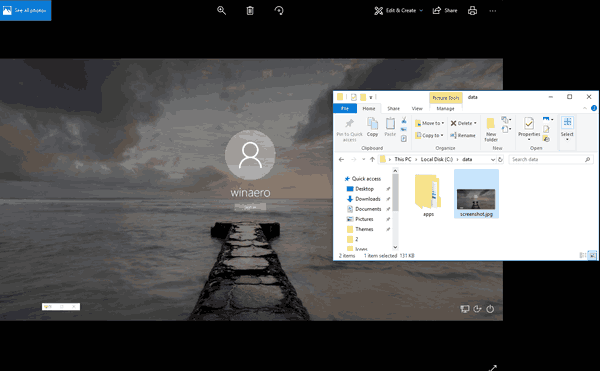
Here is how it works.
The "timeout 5" command makes a 5 second delay before starting XnView. This will allow you to minimize the command prompt window. The -capture=desktop,c:\data\screenshot.jpg command line argument tells XnView to capture the full screen and save it to the file c:\data\screenshot.jpg.
The solution is not perfect, but it is the only working method I know at the moment of this writing.
Now, you can remove the debugger value along with the utilman.exe key you created above to restore the Ease of Access functionality on the login screen.
To save your time, you can download ready-to-use Registry files to quickly replace the Ease of Access button's target with the command prompt.
The undo tweak is included.
That's it!
Support us
Winaero greatly relies on your support. You can help the site keep bringing you interesting and useful content and software by using these options:

How do you launch the command prompt? The steps are very vague. I did exactly that and there is now way to launch it.
Clicking on the ease of access button will now open the command prompt.